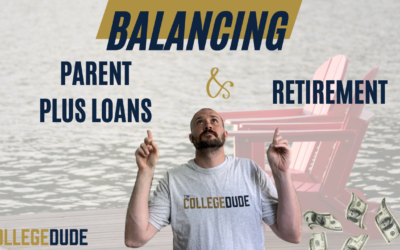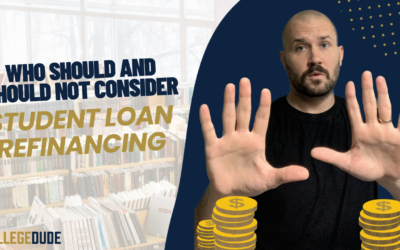If you’re applying to college & need student loans, there’s a lot of options to choose from. Typically, the place to start is the Direct Loan Program through the US Department of Education. The Direct Subsidized & Unsubsidized Loans are the most common. In this post, we’ll cover the important items you need to know. Specifically, how to apply & how they’re offered, how they’re repaid, and the differences between them. Lastly, we’ll cover why you should take the Direct Subsidized & Unsubsidized Loans if you’re planning to use student loans in your strategy. The Direct Loans for Dependent Students should be your starting point.
What are these loans?
The Direct Subsidized & Unsubsidized Loans are student loans offered through the US Department of Education. They’re available (in some combination) to anyone who completes the Free Application for Federal Student Aid (FAFSA). The FAFSA must be completed in order to qualify for these loans. The school(s) you’re applying to will include the loans in their financial aid package.
These loans have some key differences, but they’re the best place to start when it comes to self-help financial aid.
Subsidized Loans
These loans come with a unique benefit: the government covers the interest on the loan while the borrower is enrolled in school at least half-time, during the grace period, and approved deferment periods. This feature helps reduce the overall cost of borrowing for students. These loans are available to students who demonstrate financial need. To determine their financial need, and the loan amount is based on the student’s cost of attendance and Expected Family Contribution (EFC)/Student Aid Index (SAI). Subsidized loans have fixed interest rates.
By covering the interest on the loan during specific periods, these loans help reduce the financial burden on students while pursuing their education.
Unsubsidized Loans
The unsubsidized loan program provided by the US Department of Education offers financial aid to both undergraduate and graduate students regardless of their financial need. Unlike subsidized loans, unsubsidized loans accrue interest from the moment they are disbursed. However, they still provide valuable funding options for students who may not qualify for or need subsidized loans.
You do not need to demonstrate financial need to qualify for these loans. They are available to anyone who completes the FAFSA, despite financial background.
In total, dependent students are eligible for the following amounts each year of undergrad:
Year 1: $5500 (no more than $3500 can be subsidized)
Year 2: $6500 (no more than $4500 can be subsidized)
Years 3 & 4: $7500 (no more than $5500 can be subsidized)
Therefore, students can either have a combination of subsidized & unsubsidized loans, or only unsubsidized loans for their undergrad careers.
How To Apply for these Loans
Thankfully, the application process is straightforward for these loans. The only real effort you have to do is complete the FAFSA. From there, there should be a school code which is included inside the FAFSA and will allow you to input the school(s) of your choice.
Once the school receives the FAFSA and matches it up with your net price offer, they’ll determine if you’re eligible for subsidized or unsubsidized loans. You’ll see that on the financial aid package. From there, if you want to accept the loans, they’ll already be included. Call your school’s financial aid office if you have questions.
How to Repay these Loans
These loans offer a number of ways to repay. In many ways, it’s one of the biggest advantages. You can open yourself up to a number of options by consolidating your student loans. This process if completely free of charge. There’s a good number of repayment plan options available to you. Along with a loan simulator to determine which plan is best for you.
Why They should be part of your college funding strategy
When it comes to paying for college for undergrads, it’s a complicated process. If you’re utilizing student loans, the Direct Loans for dependent students are as close to a slam dunk as you will find. Make sure you budget yourself properly and work with a professional if you’re unsure.






